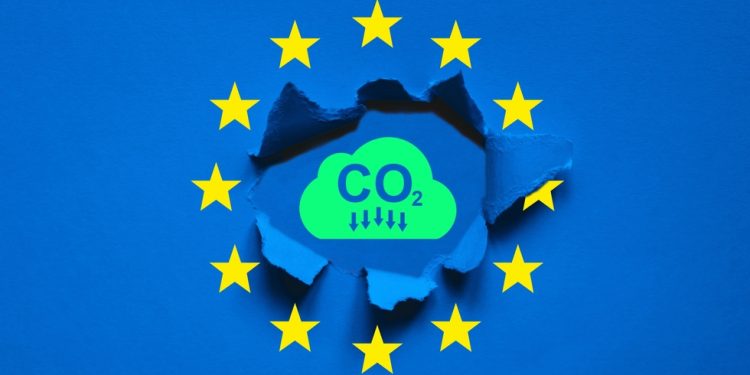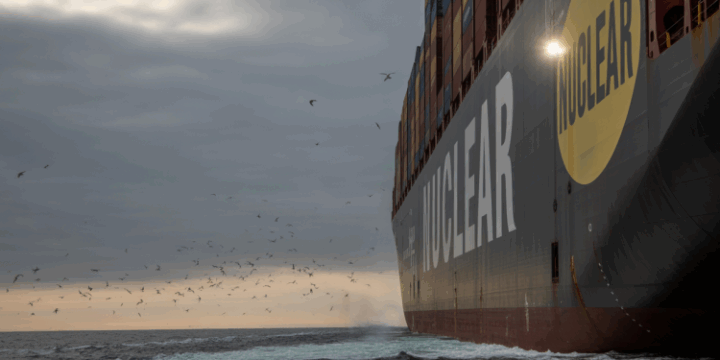July 15, 2025

Transport & Environment (T&E) has released a briefing setting out key recommendations for strengthening the EU Emissions Trading System (ETS) for the maritime sector, in view of the upcoming policy review and the 2040 EU climate target.
The T&E briefing has highlighted the need to maintain both the EU ETS and the IMO’s Net Zero Framework (NZF), as neither alone is sufficient to fulfil shipping’s share of climate action.
Key recommendations include:
- Ensuring an effective climate cost of emitting GHG
While the IMO’s framework marks progress in the global climate regime, it lacks ambition in ensuring that shipping polluters pay for their share of pollution. The ETS is a critical tool for achieving the EU’s climate targets for the maritime sector and cannot be replaced by the IMO’s NZF, which leaves above 85% of EU shipping emissions unpriced.
Despite being a regional measure, the ETS is expected to generate as much revenue (~€10 billion/year) in Europe, as the IMO measure does globally (~$10 billion/year). A portion of ETS funds should be reinvested in green e-fuel production in Europe in order to support the decarbonization of shipping and enhance EU strategic autonomy. Both systems are necessary, especially as neither is sufficient on its own to meet EU climate objectives or cover the true climate cost of emissions.
- Extending the ETS to vessels between 400 and 5000 GT
Smaller ships between 400 and 5000 GT are currently excluded from the EU ETS, despite representing a notable share of maritime traffic and contributing significantly to GHG and air pollutant emissions, particularly in coastal areas. Including these vessels in the ETS would create necessary incentives and generate revenues to support their decarbonisation.
The required technologies, such as battery-electric, hydrogen-based, and hybrid propulsion, are already commercially available and well-suited to these vessel types, given their lower energy needs and fixed routes. However, uptake remains limited without policy-driven incentives.
To minimise administrative burden while maintaining environmental ambition, a dual approach is recommended: vessels operating predominantly between EEA ports could fall under ETS 2, with upstream carbon pricing and simplified reporting. Other small vessels could be included in ETS 1, with adapted ‘MRV-light’ requirements to ease compliance. This differentiated inclusion would support clean technology deployment, help reduce emissions, and contribute to a fair and effective EU maritime climate strategy.
- Removing exemptions for ferries that can already be electrified
The ETS exempts some ferry routes between small EU islands and the mainland until 2030, but many could already be served by electric or hybrid ships. These exemptions may no longer be necessary and could be phased out by 2028.
- Considering additional carbon leakage safeguards
While solid and consistent evidence for ETS evasion is lacking, the EU could already consider developing additional safeguards to further disincentivise shipowners from exploring evasive behaviour. This, for example, could be achieved by switching to a container-based ETS application on a limited number of routes which are theoretically more sensitive to potential evasion.
This so-called ‘CBAM approach’ for shipping would apply ETS carbon price on maritime emissions from imported/exported containerised cargo from the origin-to-destination basis (as opposed to first/last leg of ship voyages) if these containers are transhipped via the non-EEA transhipment hubs in the EU neighbourhood. This would further reduce the incentive to replace EU transhipment activities with non-EU ones using small feeder vessels. Additionally, the Commission should consider reducing the 65% transhipment ratio for adding other evasion-risky non-EU ports to the existing safeguard under the ETS.
- Aligning alternative fuels eligibility across EU ETS and FuelEU Maritime
To ensure consistency and environmental integrity, the ETS should align with FuelEU Maritime’s ban on first-generation biofuels, which are linked to deforestation, higher emissions, and biodiversity loss due to indirect land-use change.

